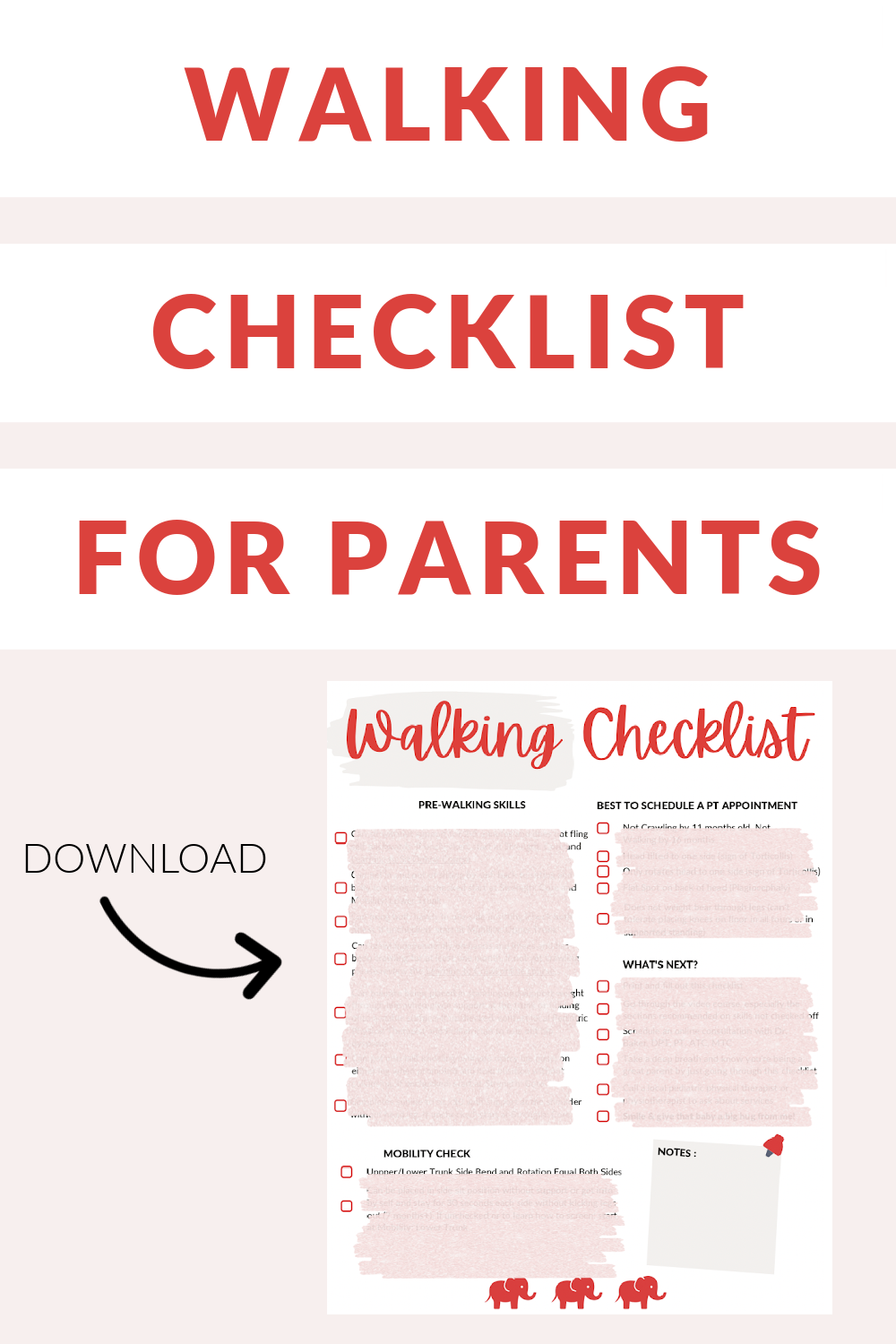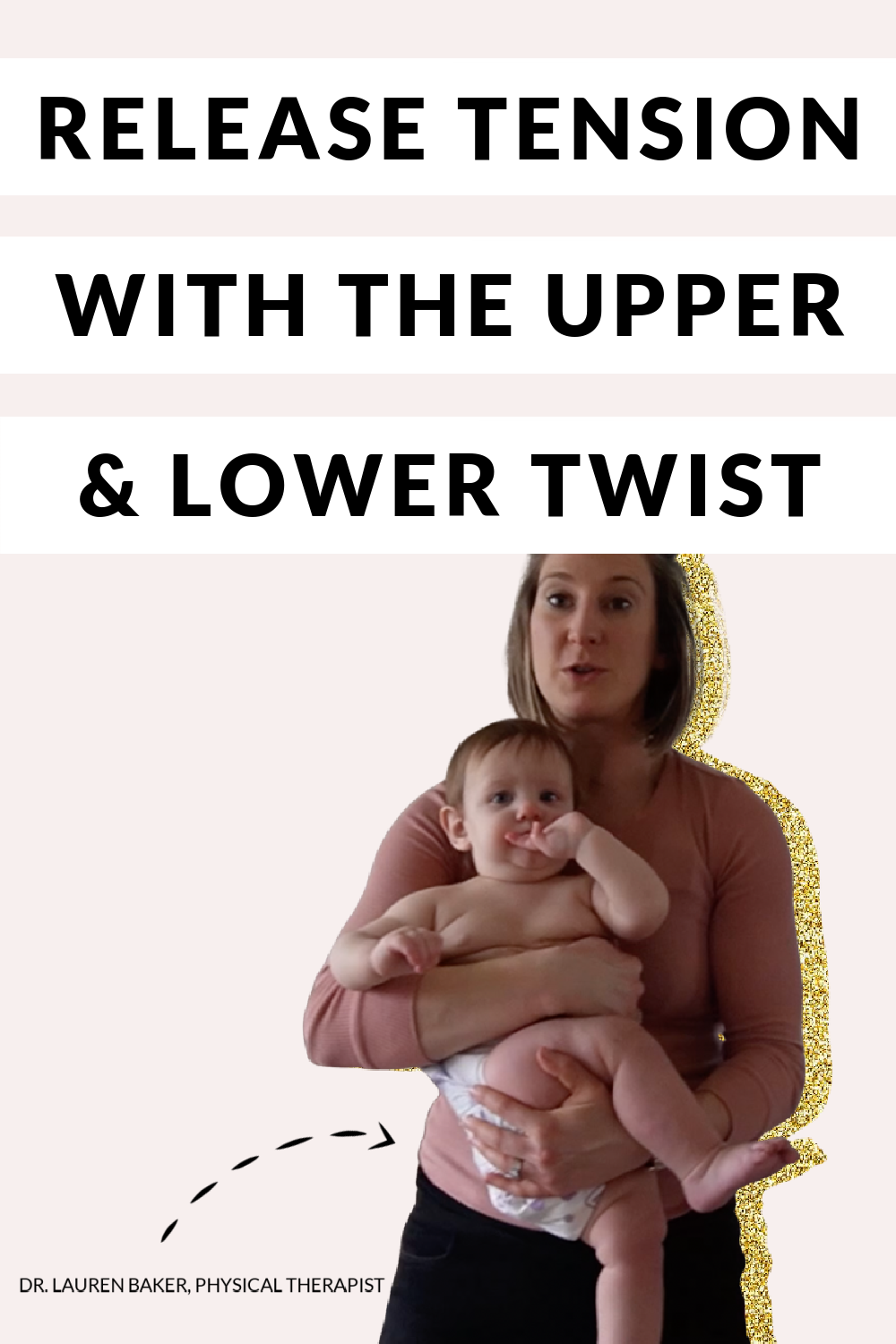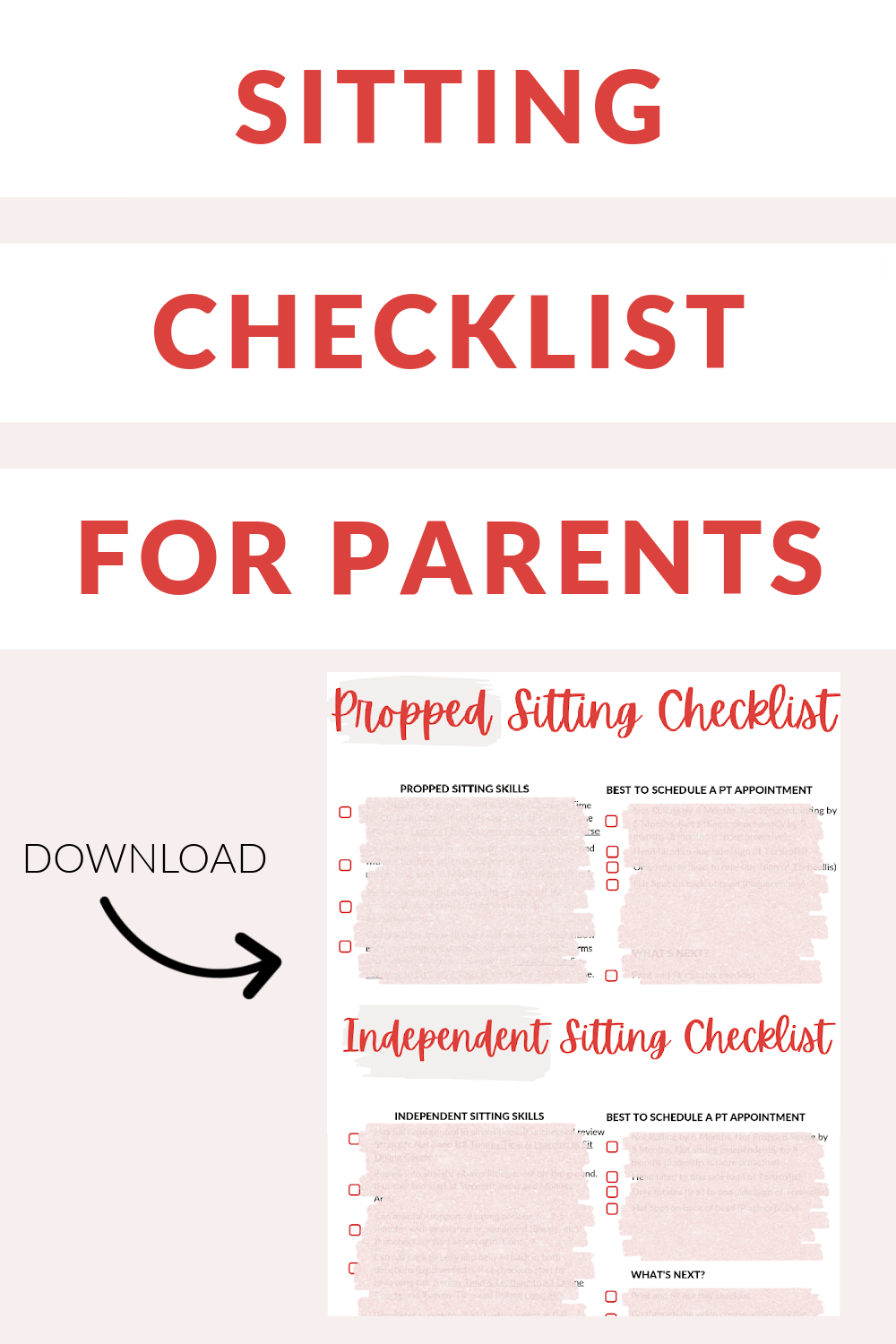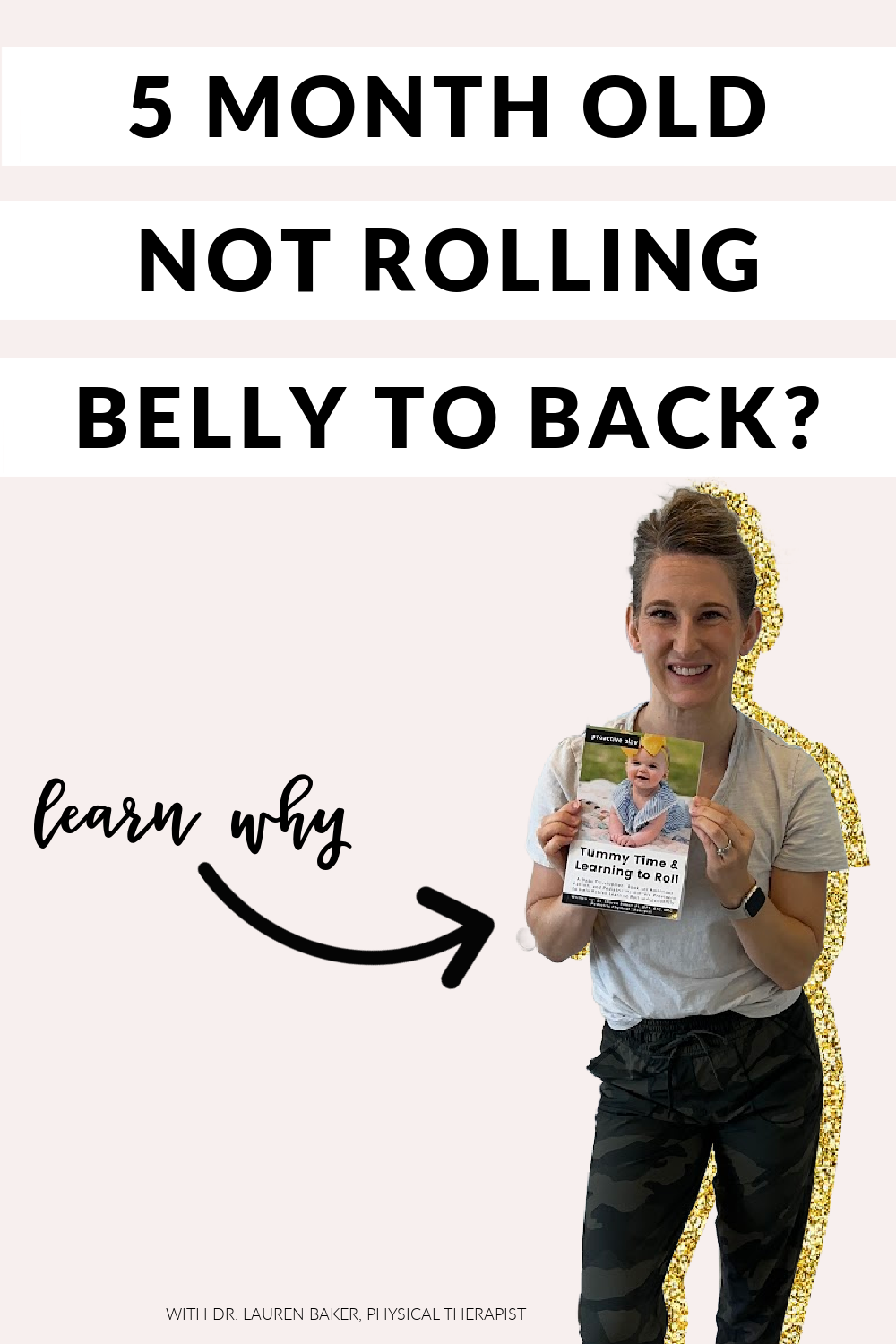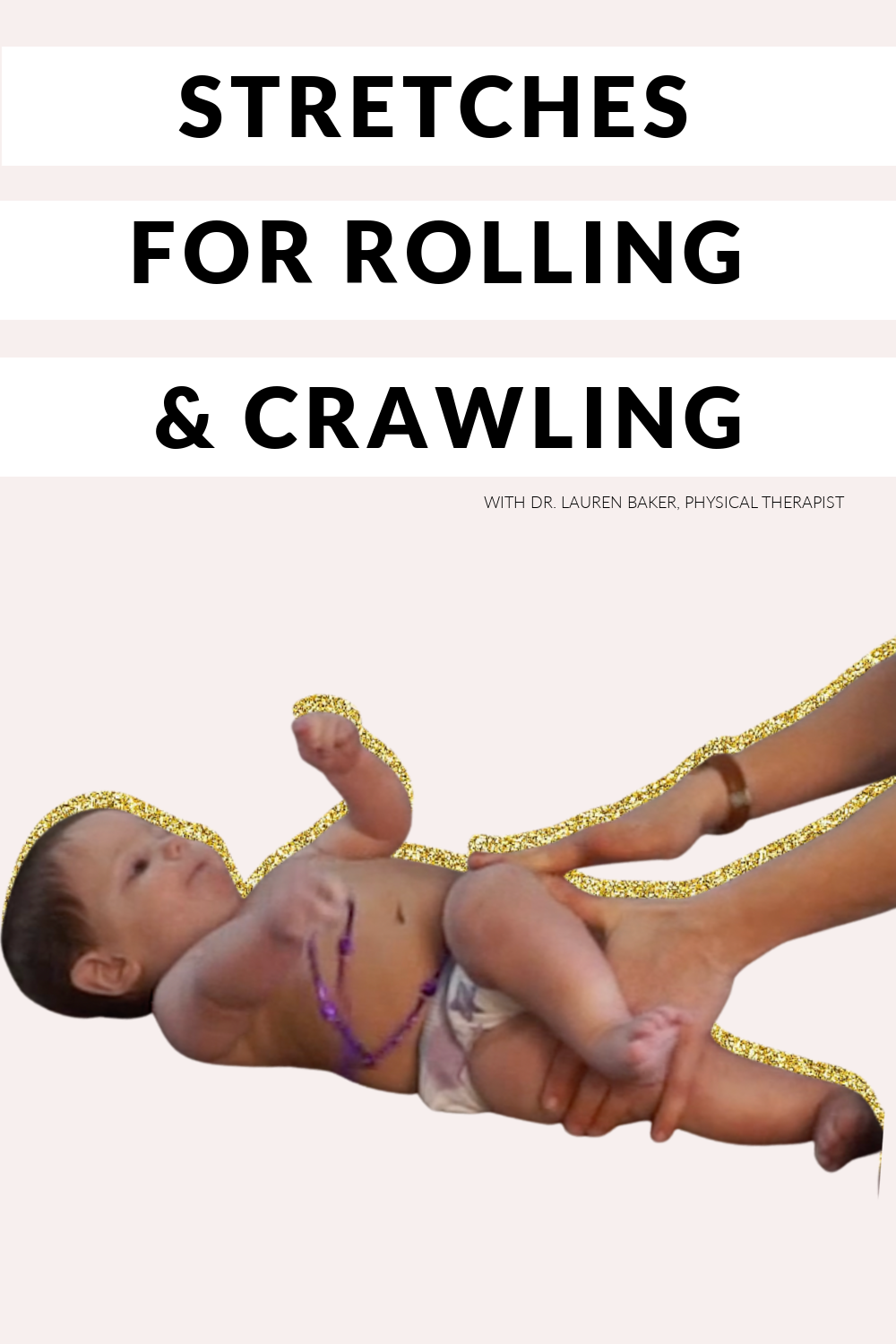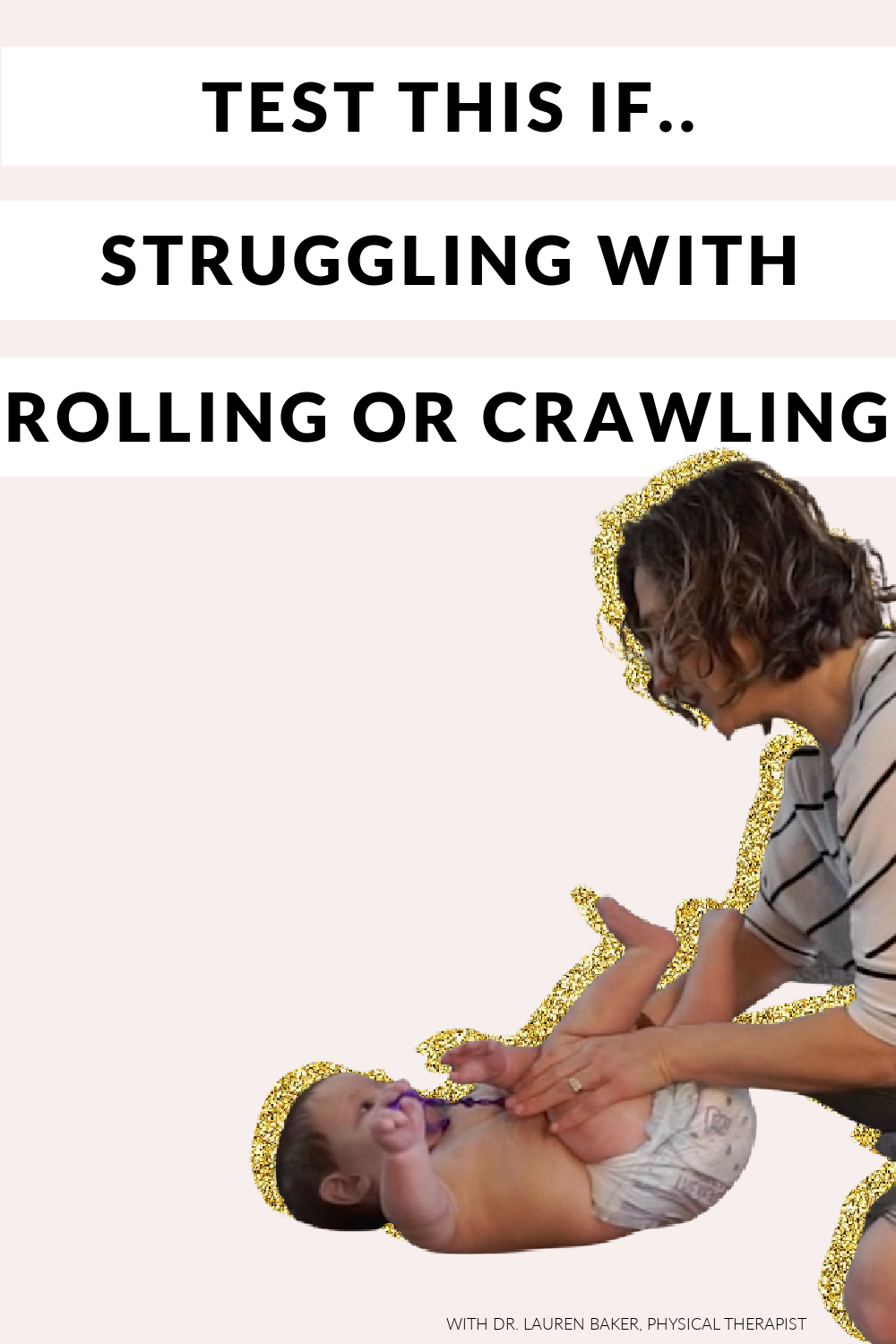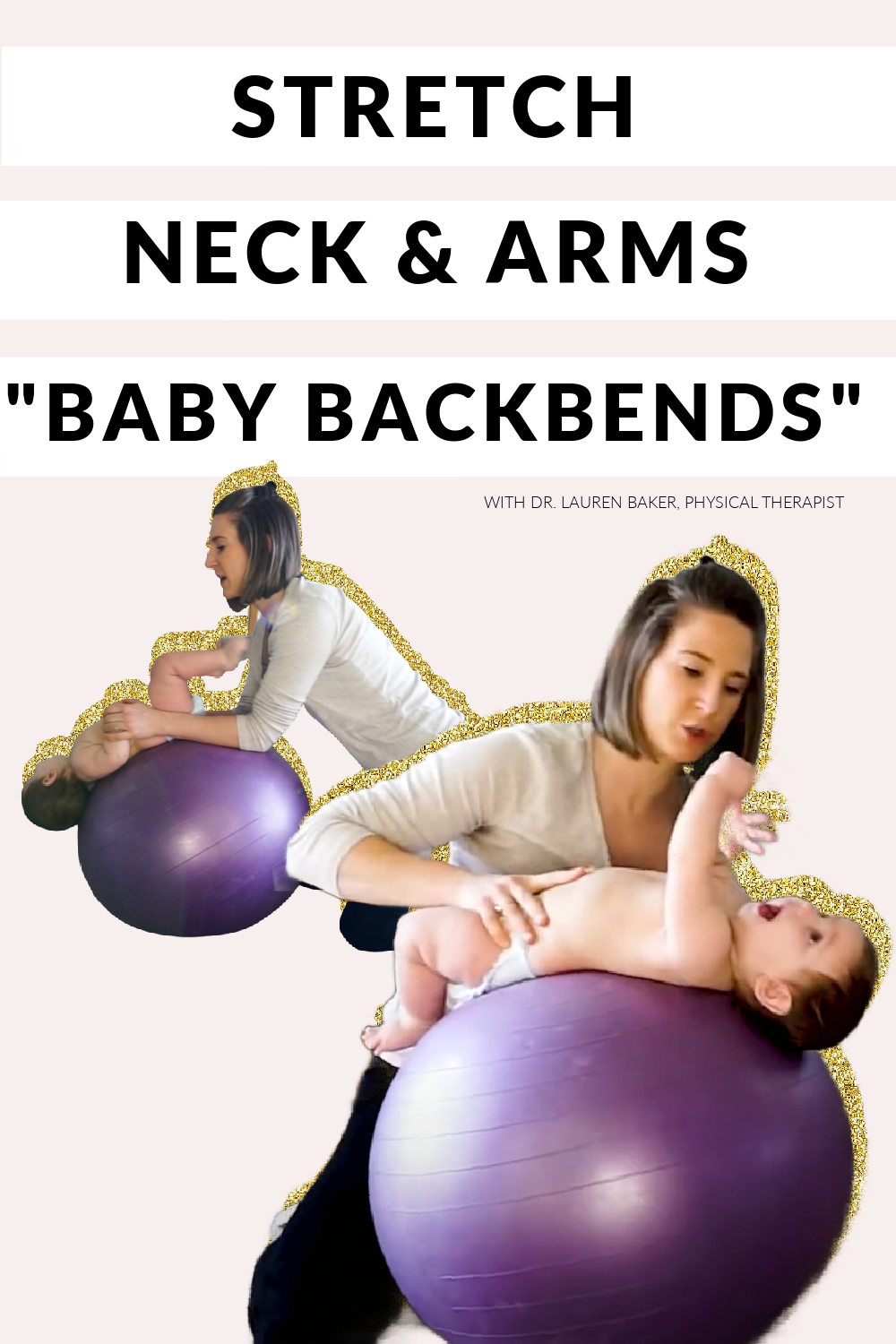Download The Free Learning to Walk Checklist
Perfect for parents trying to uncover what might be blocking their child from walking on their own.
Total Motion Release for Babies: Relieve Infant Tension to Improve Motor Milestones
this blog contains affiliate links
Hello there! I'm Dr. Lauren Baker, a pediatric physical therapist. Through this blog, I'm excited to share with you an effective technique known as Total Motion Release (TMR) that I've found incredibly beneficial for babies. My aim is to guide proactive parents like you in helping your little ones release tension and move with ease. Consider me your physical therapy bestie helping you help your babies move well.
What is Total Motion Release (TMR)?
Total Motion Release is a concept that is based in osteopathic medicine called the modified strain counterstrain principle. In simpler terms, it's about shortening a muscle to help it relax, thereby gaining range of motion in the opposite direction.
This technique is gentler than traditional stretching methods, which involve lengthening the muscle, creating that resistance you feel in your muscles when you stretch. In TMR, we do the opposite - we shorten the muscle, which is especially effective for babies due to its gentle nature.
Traditional stretching sometimes is less effective in infants, because when they feel the resistance of a tight muscles being “stretched” or “lengthened,” they may interpret that as dangerous and instead of relaxing, they can tense up.
Modified strain counterstain principles such as total motion release, use a positional release construct where you ONLY shorten the muscle, going into the easy direction or side, which allows the babies to continue to say calm and relaxed, since they are not feeling that resistance.
It sounds counter-intuitive but truthfully, it often achieves amazing and often quick results.
Why TMR for Babies?
Gentleness: It's far gentler compared to stretching, making it ideal for infants.
Effectiveness: It achieves the same goal of increased range of motion but in a more comfortable way for the baby.
Upper and Lower Trunk Rotation in TMR
In today's post, we'll focus on the upper and lower trunk rotation aspects of TMR. Babies bodies need to be able to twist in opposite directions equally. Their upper half of their body needs to go to the right, while their lower half of their body goes to the left easily as well as the opposite of those directions.
Think of wringing out a wet towel, you twist your right hand and left hand in opposite directions to squeeze out the water. Babies' bodies need to be able to twist like that in order to achieve their milestones such as rolling over (both directions) and getting into all fours to crawl.
Before You Start
Professional Evaluation: Ensure your baby is evaluated by a licensed therapist (physiotherapist or physical therapist) trained in TMR before trying these techniques. Total Motion Release for babies taught by Susan Blum, utilizes multiple principles. This video covers one simple positional release technique and should not be confused with Total Motion Release as a treatment option. To find a therapist trained in total motion release, please search here.
Direction of Ease: Your therapist will guide you on the correct direction of rotation for your baby. For positional release techniques using the TMR principles, you will ONLY hold the direction of ease.
The Techniques: watch the video down below to ensure that you are doing it correctly and to learn even more in detailed why this technique works well for infants.
Upper Trunk / Lower Trunk TMR Technique
Positioning: One hand supports under the baby's arms around their chest, and the other hand goes through the baby's legs with your hand being placed on their buttocks that is the same side as the arm you are using (if your right arm is around their chest, you will rest your hand on their right buttocks/pelvis and vice versa) .
Rotation: Gently rotate the baby's upper and lower trunk in the direction of ease by bringing the elbow of the arm that is through the legs backwards and holding their trunk steady against your chest. Only complete to the level of resistance and not past.
Duration: Spend 1-3 minutes in this position, depending on the baby’s tolerance and then follow up with 30 seconds to 1 minute of bouncing to “lock in” the newly gained motion.
TIMESTAMPS:
1:03 what is total motion release (TMR)
2:53 why the total motion release technique for babies is ideal for increasing range of motion
4:29 what not to do when using total motion release techniques for babies
5:09 what to do if a baby switches directions
5:37 RR upper trunk / LR lower trunk total motion release technique
7:13 LR upper trunk / RR lower trunk total motion release technique
8:17 safety tips and explanation of tmr upper twist lower twist technique
10:03 additional tips for upper twist lower twist TMR tots release technique
TOY IDEAS:
What Not to Do
Avoid Both Sides: Don’t work on both sides as you would in stretching. Stick to the direction of ease as advised by your therapist. If you do both sides, it isn’t as effective and instead of completing a positional release using TMR principles, you would be completing traditional stretching.
Handling: Always handle the baby gently, focusing on the pelvis and lower back, not the hip joints.
Additional Tips
Movement: Feel free to gently bounce or move around during the technique. I often bring them toward a window or walk around with them in my arms throughout the house.
Observation: Watch for the baby's cues. If they show discomfort, ease off. Never hold a baby in a position if they are trying to kick out of it, always allow them to move out of the position and then once they are calm, re-attempt.
Frequency: Aim for a 2-minute session followed by 30 seconds of gentle bouncing.
Curious About Learning More on Tummy Time, Rolling, or Both?
The absolute best book for parents on tummy time and rolling is: Tummy Time and Learning to Roll: A Baby Development Book for Ambitious Parents and Pediatric Healthcare Providers to Help Babies Learn to Roll Independently. The book comes with a free online video course to help parents fully understand how to complete the different exercises, printable checklists to know exactly where your baby is at, and when to reach out for additional help.
This book was written by Dr. Lauren Baker, PT, DPT, ATC, MTC, who is a Pediatric Physical Therapist in Boise, Idaho, trained in helping parents learn how to help their babies move and master their milestones. She loves teaching parents how to see how their babies are moving as well as how to influence those movements though play positions and exercises to help babies move with confidence and ease.
Tummy Time and Learning to Roll is the first book in the Proactive Play series written by Pediatric Physical Therapist Dr. Lauren Baker in order to help Ambitious Parents and Pediatric Healthcare Providers learn how to help babies master tummy time and learn to roll. It is meant to help ambitious parents understand baby development from birth to six months (tummy time to rolling).
This book is a mix of easy-to-follow and more in-depth information than is typically found in baby development books because Dr. Baker believes parents deserve to have all the information at their fingertips.
This book breaks down each piece of movement in checklists so that parents know what their babies need for tummy time and rolling. It also covers what areas might limit a child with rolling, why it is so important, and when to seek help from a pediatric PT.
This book comes with colored photos and easy-to-follow demonstration videos that can help parents implement safe, strategic play-based exercises with their babies in 20 minutes per day.
A Great Resource For:
Parents and Pediatric Healthcare Providers of babies 0-6 months
Parents of babies who are struggling with tummy time, rolling back to belly, belly to back, or only to one side
Access to simple, easy-to-follow videos of play positions and exercises
Learning the four pillars of movement needed in order to master rolling
240+ Color Photo Examples of:
Tummy Time, Sidelying, and Back Play
Developmental Toys and Equipment
Hand Placement and Strategic Play Positions
Common Areas of Restriction or Weakness
When To Reach Out For Help
What If You Want Extra Help?
If you have concerns about their movement, remember, you can always reach out to a pediatric physical therapist. It's your right as a parent to advocate for your child's development.
Sometimes, a few tips and tricks are all you need to get your baby moving better. We're here to support you and release those mama worries. If you are looking for in home pediatric physical therapy, check our listing of therapists.
For those eager to learn more or seeking personalized guidance, I offer online video parent consultations internationally which can be scheduled by clicking here. I am dedicated to answering questions and providing tailored play activities for each unique developmental journey.
When Should Babies Receive Pediatric Physical Therapy?
Parents can call and schedule with a Pediatric Physical Therapist at any time, for any concern in all fifty states without a referral from their Pediatrician.
Pediatric Physical Therapy is medically indicated in all babies who are not rolling in all four directions by six months (back to belly over their right arm AND left arm + belly to back over their right arm AND left arm).
Pediatric Physical Therapy is medically indicated if you notice a flat spot on the back of an infants head (possible plagiocephaly), a tilt of their head consistently to one side (ear to shoulder - possible torticollis), or a rotation preference of their neck (consistently look only to the right or left - possible torticollis).
Many Pediatric Physical Therapists including Dr. Baker, can successfully treat flat spots (Plagiocephaly) without a helmet with a combination of therapy and positioning strategies if seen prior to 4 months (0-3 months is ideal). Dr. Baker uses the Baby Begin Method of repositioning.
Flat spots can be due to in-utero positioning, rotational preference (right sided flatness most common) and babies are at an increased risk for flatness if they are male, were breech, multiple birth, premature, have difficulty with tummy time, show signs of Torticollis (tilt/rotation preference) or are in containers > 2 hr/day.
Final Thoughts
I hope this guide helps you understand and apply the Total Motion Release technique for your little one. It's essential to always prioritize gentleness and follow the guidance of a trained professional. If you have questions or want to learn more about pediatric mobility, feel free to reach out or schedule a consultation with me.
Remember, every baby's journey is unique, and your proactive approach in understanding and aiding their movement is invaluable. Stay tuned for more insights and tips on various stages of your baby's movement development – crawling, walking, rolling, and more!
Look down below for more resources on rolling or click on the blog post page if your baby is working on a different milestone such as crawling.
And that's it, friends! If you find this helpful, let me know in the comments of the youtube video. I love interacting with parents committed to their children's well-being. Here's to a journey of gentle, effective proactive play for your little ones! 🌟
Walking
this page contains affiliate links
Curious About Learning More on How To Teach Babies To Walk Without Support?
The absolute best resource for parents on helping their babies learn to walk with and without support is the free online course: Learning to Walk by Dr. Baker.
To gain immediate access to the online course, click the link above, submit your information, and the online course instructions will be emailed to you directly.
The free online video course is designed to help parents fully understand how to help their children walk with and without support and trouble shoot what building block of walking the child might not have mastered yet.
It comes with video examples of exercises, printable checklists to know exactly where your baby is at, and information on when to reach out for additional help.
This online course was created by Dr. Lauren Baker, PT, DPT, ATC, MTC, who is a Pediatric Physical Therapist in Boise, Idaho, trained in helping parents learn how to help their babies move and master their milestones.
She loves teaching parents how to see how their babies are moving as well as how to influence those movements though play positions and exercises to help babies move with confidence and ease.
It is meant to help ambitious parents understand baby development from 9-18 months (getting in/out of standing, cruising/walking with support to independent walking).
This online course breaks down each piece of movement in checklists so that parents know what their babies need for walking and it also covers a checklist to make sure babies have mastered crawling (otherwise, this could be a reason why walking is still a struggle!)
It also covers what areas might limit a child with walking, how to get in/out of standing, how to walk with and without support, and when to seek help from a pediatric PT.
This online course can help parents implement safe, strategic play-based exercises with their babies in 20 minutes per day.
A Great Resource For:
Parents and Pediatric Healthcare Providers of babies 9-18 months
Parents of babies who are struggling with getting in/out of standing or walking with/without support
Access to simple, easy-to-follow videos of play positions and exercises
Learning the four pillars of movement needed in order to master walking independently
8 Online Course Modules
Building Blocks of Walking
Walking Checklists + Shoe Guides
Getting Into Standing
Cruising and Walking With/Without Support
Strength Exercises
Mobility Exercises
Walking Specific Play Exercises
Next Steps: How to Prep for Jumping & Climbing
What If You Want Extra Help?
If you have concerns about your baby’s ability to pull into standing, cruise (walking while holding onto furniture), or walking independently without support, remember, you can always reach out to a pediatric physical therapist.
It's your right as a parent to advocate for your child's development. Sometimes, a few tips and tricks are all you need to get your baby moving better.
I’m here to support you and release those worries.
For those eager to learn more or seeking personalized guidance, I offer online video parent consultations internationally and Pediatric Physical Therapy in Boise, ID and the Treasure Valley – which you can learn more about by scheduling a free 20 minute chat with me (Idaho only) or an online parent consultation by clicking here.
I am dedicated to answering questions and providing tailored play activities for each unique developmental journey.
When Should A Child Receive Pediatric Physical Therapy?
Parents can call and schedule with a Pediatric Physical Therapist at any time, for any concern in all fifty states without a referral from their Pediatrician.
Pediatric Physical Therapy is medically indicated in all babies who are not walking on their own without support by 18 months. Proactive Pediatric Physical Therapy recommend if a child is not walking on their own by 16 months.
Pediatric Physical Therapy is medically indicated if you notice a flat spot on the back of an infants head (possible plagiocephaly), a tilt of their head consistently to one side (ear to shoulder - possible torticollis), or a rotation preference of their neck (consistently look only to the right or left - possible torticollis).
Flat spots can be due to in-utero positioning, rotational preference (right sided flatness most common) and babies are at an increased risk for flatness if they are male, were breech, multiple birth, premature, have difficulty with tummy time, or are in containers > 2 hr/day. Flat spots can only be treated up until 18 months and success decreases after the age of 12 months.
Jumping
Approximately 6 months after walking independently, children will begin showing signs of attempting to jump on their own.
Once a child is 2-2.5 years old, they are typically able to jump forward 4-23 inches.
If a child is 2.5 years old and have been walking for > 6 months and they are not yet showing signs of jumping (up, down, and forward), there may be strength, power, or coordination skills that they need help acquiring.
One of my favorite ways to work on building lower leg strength and endurance is the toddler squat which can be done supported or having them do it on their own.
What If You Want Extra Help?
If you have concerns about your child’s ability to jump up, down, or forward with/without support, remember, you can always reach out to a pediatric physical therapist.
It's your right as a parent to advocate for your child's development. Sometimes, a few tips and tricks are all you need to get your child moving and more confident in their coordination.
I’m here to support you and release those worries.
For those eager to learn more or seeking personalized guidance, I offer online video parent consultations internationally and Pediatric Physical Therapy in Boise, ID and the Treasure Valley – which you can learn more about by scheduling a free 20 minute chat with me (Idaho only) or an online parent consultation by clicking here.
When Should A Child Receive Pediatric Physical Therapy?
Parents can call and schedule with a Pediatric Physical Therapist at any time, for any concern in all fifty states without a referral from their Pediatrician.
Pediatric Physical Therapy is medically indicated in children who are showing significant signs of struggle with jumping at 2.5 years, are not jumping forward 4 inches by 3 years, not jumping down from a 12 inch height and landing with both feet at the same time by 3 years, or not jumping 1-2 inches off the ground by 3 years.
Stairs
Climbing skills begin as babies, when they crawl over objects on the floor and get on/off of elevated surfaces such as play equipment or a couch/chair.
Babies who skip crawling are at risk for having difficulty with climbing up and down stairs as they did not have the hip, leg, and core strengthening opportunities of their crawling peers.
Children who always lead with one foot when going up the stairs and with the other foot when going down stairs are potentially showing signs that one side of their body is stronger or more balanced than the other.
For example, if a child uses their right leg when going up the stairs and their left leg going down the stairs, their right leg is potentially stronger than their left leg. If they can do the opposite direction when prompted, there is less concern, but if they refuse or cannot without assistance, the left leg may be weaker than the right.
Children should be able to walk up stairs without holding on by 2.5 years (either with one foot or two feet on a step).
Typically, children should be able to walk up with either leg when prompted using one foot on each step by 3-3.75 years of age.
If a child is struggling with stepping up with one leg but not the other, try this activity to increase strength and confidence in the leg they tend to avoid using.
What If You Want Extra Help?
If you have concerns about your child’s ability to climb up or down stairs with/without support, remember, you can always reach out to a pediatric physical therapist.
It's your right as a parent to advocate for your child's development. Sometimes, a few tips and tricks are all you need to get your child moving and more confident in their coordination.
I’m here to support you and release those worries.
For those eager to learn more or seeking personalized guidance, I offer online video parent consultations internationally and Pediatric Physical Therapy in Boise, ID and the Treasure Valley – which you can learn more about by scheduling a free 20 minute chat with me (Idaho only) or an online parent consultation by clicking here.
When Should A Child Receive Pediatric Physical Therapy?
Parents can call and schedule with a Pediatric Physical Therapist at any time, for any concern in all fifty states without a referral from their Pediatrician.
Pediatric Physical Therapy is medically indicated in children who are showing significant signs of struggle with stairs at 2 years, are not going up/down stairs with support using both legs by 2.5 years (either with one foot or two feet on a step), not walking up stairs with one foot on each step without support by 3 years, or not walking down stairs with one foot on each step without support by 4 years of age.
Throwing & Catching
If a child is having difficulty with throwing/catching, it could be due to difficulty with coordinating their eyeballs!
When a ball comes toward a child, their eyeballs need to come together in order for them to accurately catch a ball.
If you notice a child closing their eyes as the ball comes toward them, they do not yet have the coordination of their eyeballs coming together, so they close their eyes instead.
This decreases their accuracy and often the ball will bounce off their chest or arms instead of them catching it.
try this activity with your child to train their eyeballs (kids love it! and you can even have them do it to you too!).
What If You Want Extra Help?
If you have concerns about your child’s ability to throw a ball overhand, underhand, or catch a ball, remember, you can always reach out to a pediatric physical therapist.
It's your right as a parent to advocate for your child's development. Sometimes, a few tips and tricks are all you need to get your child moving and more confident in their coordination.
I’m here to support you and release those worries.
For those eager to learn more or seeking personalized guidance, I offer online video parent consultations internationally and Pediatric Physical Therapy in Boise, ID and the Treasure Valley – which you can learn more about by scheduling a free 20 minute chat with me (Idaho only) or an online parent consultation by clicking here.
I am dedicated to answering questions and providing tailored play activities for each unique developmental journey.
When Should A Child Receive Pediatric Physical Therapy?
Parents can call and schedule with a Pediatric Physical Therapist at any time, for any concern in all fifty states without a referral from their Pediatrician.
Pediatric Physical Therapy is medically indicated in children who are not throwing/catching by 3-4 years old.

